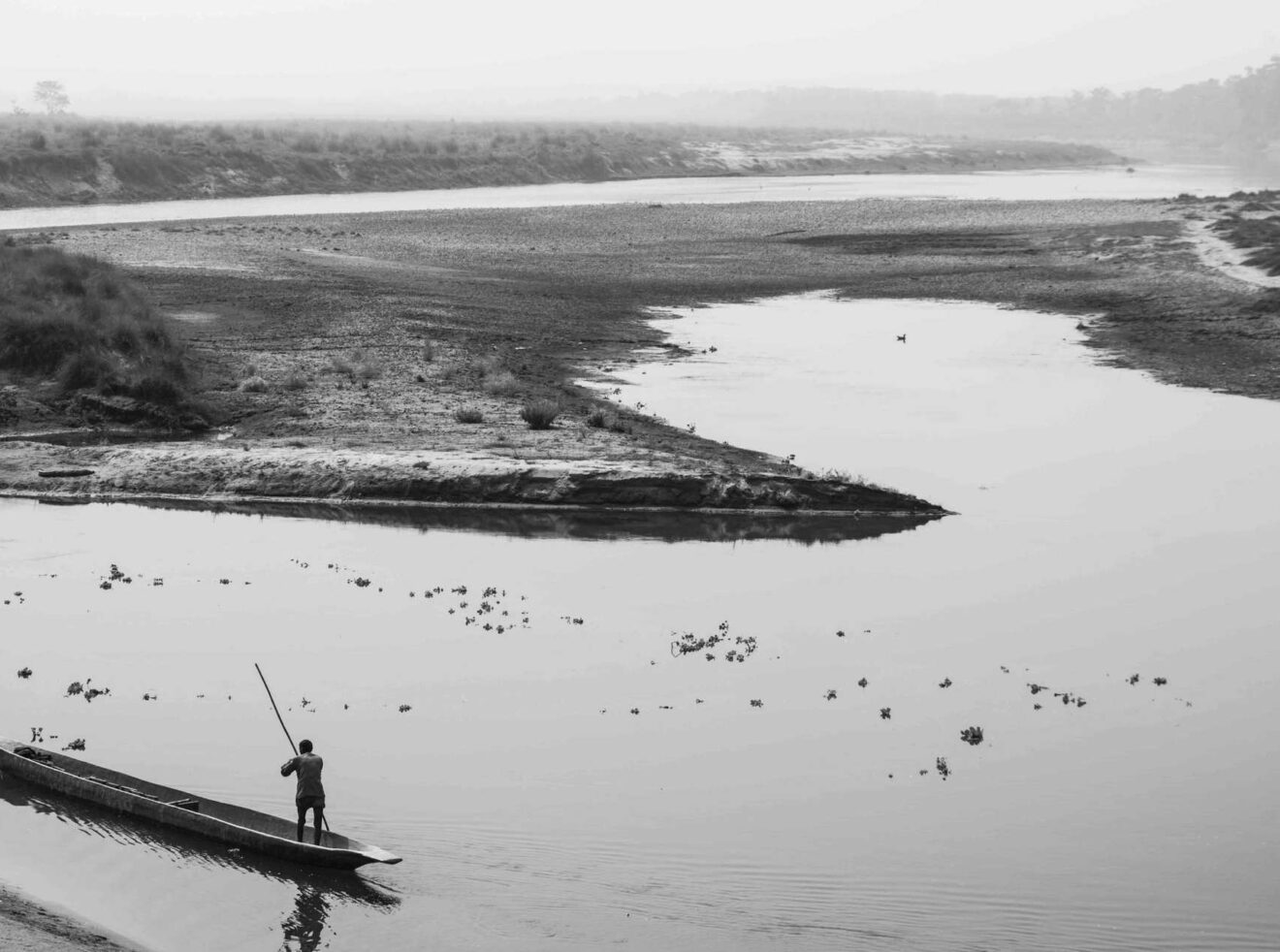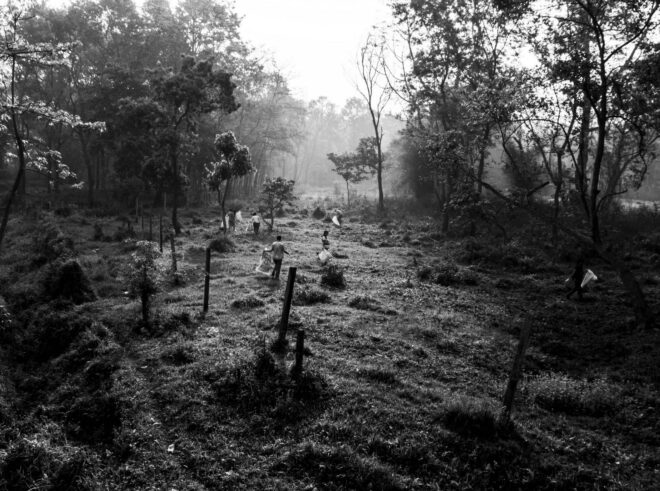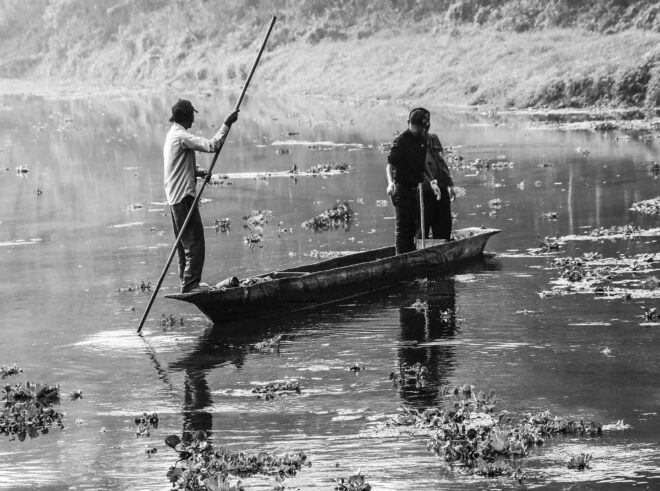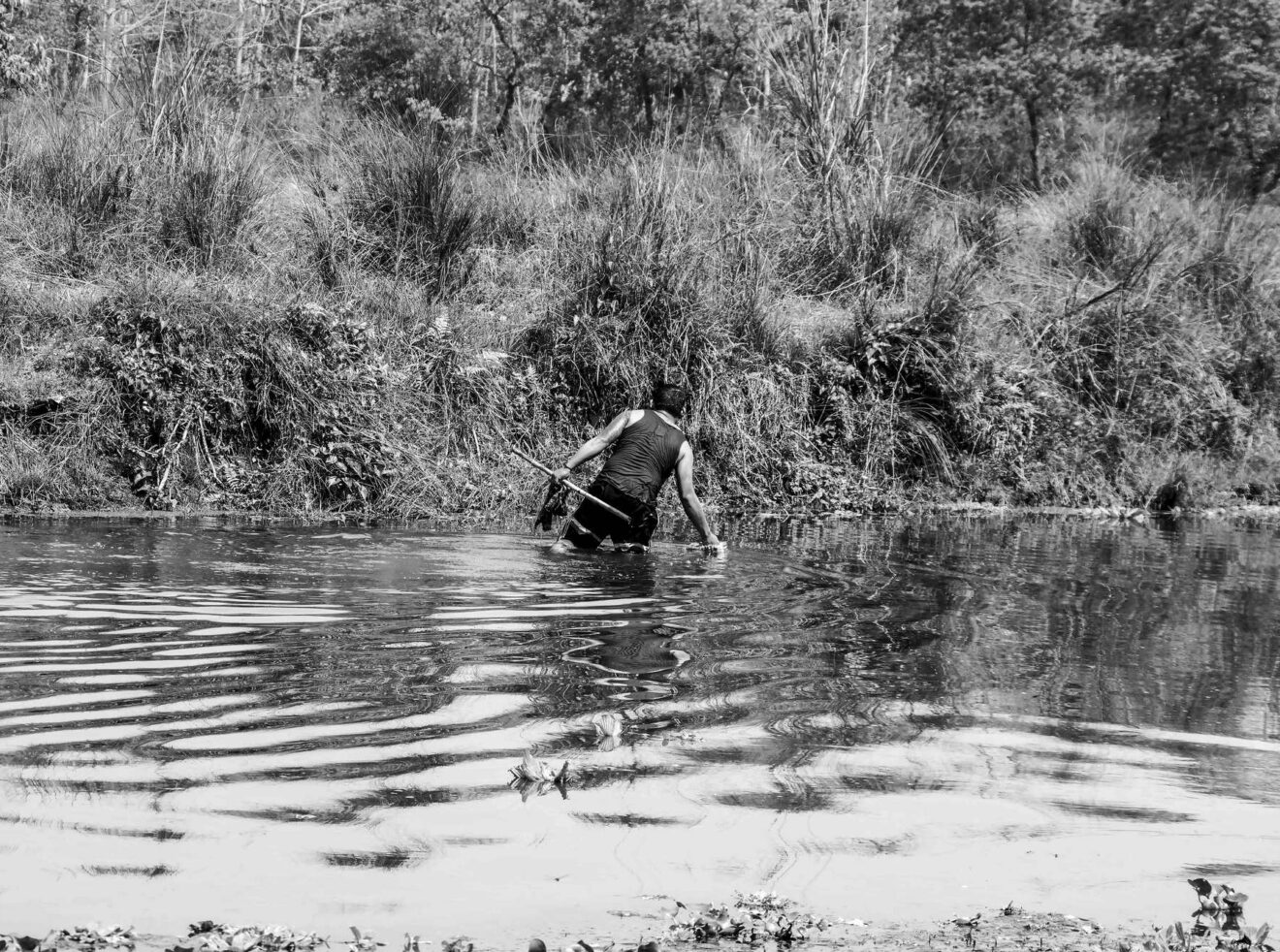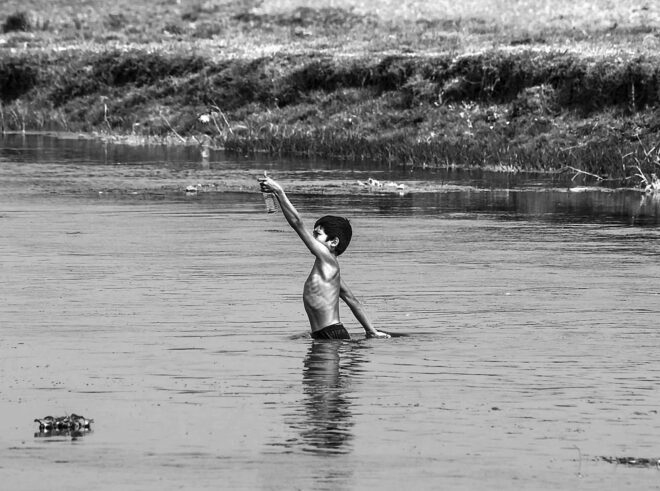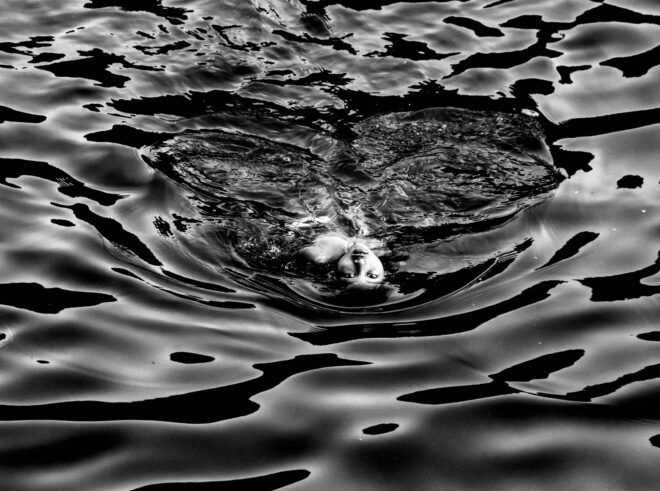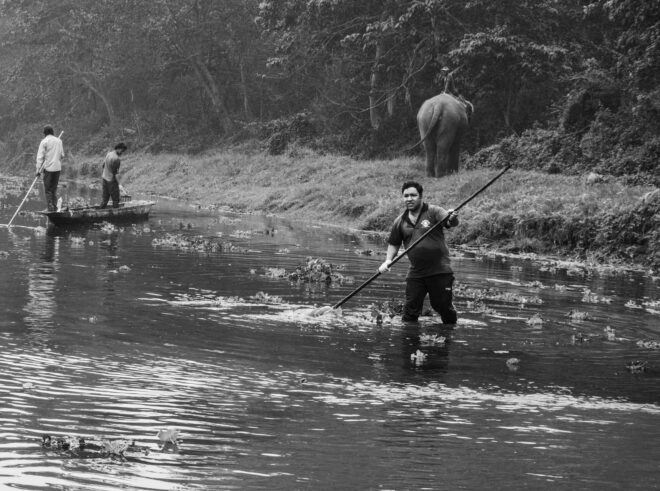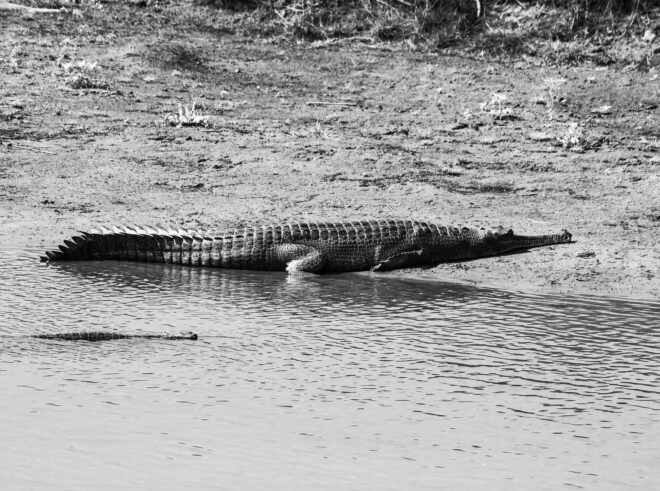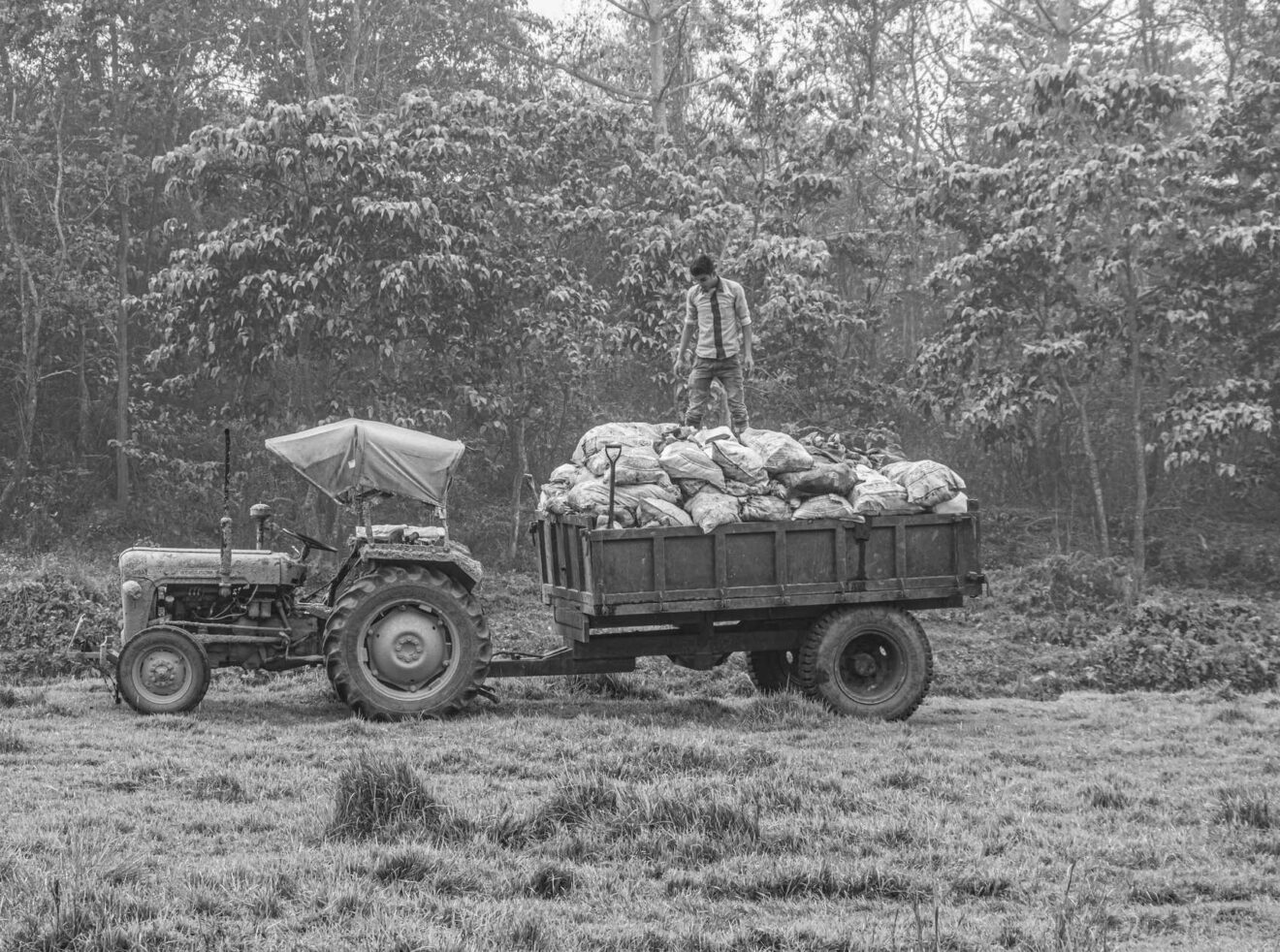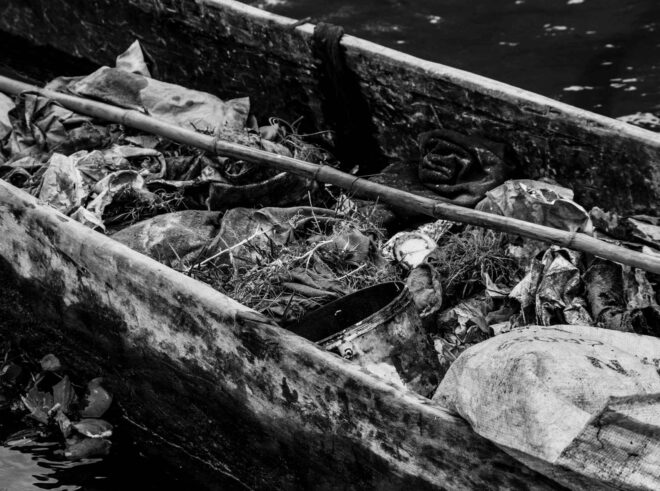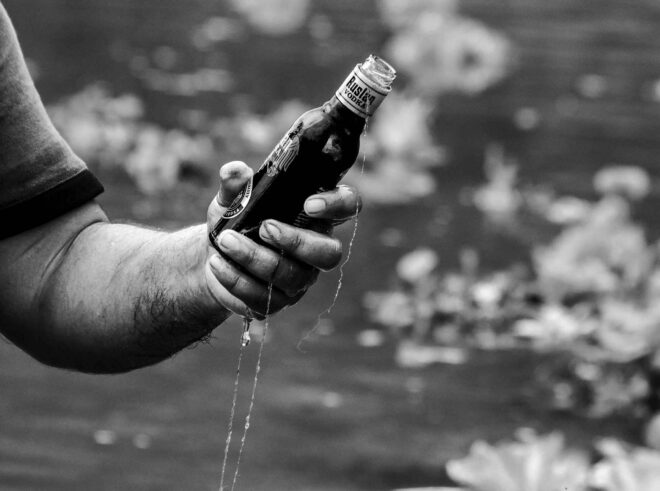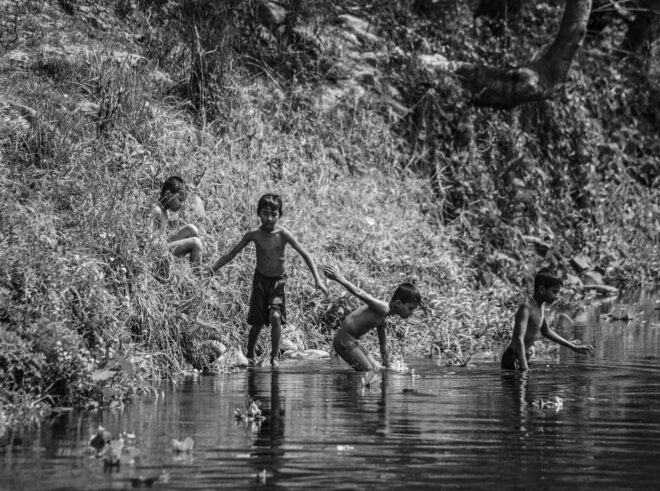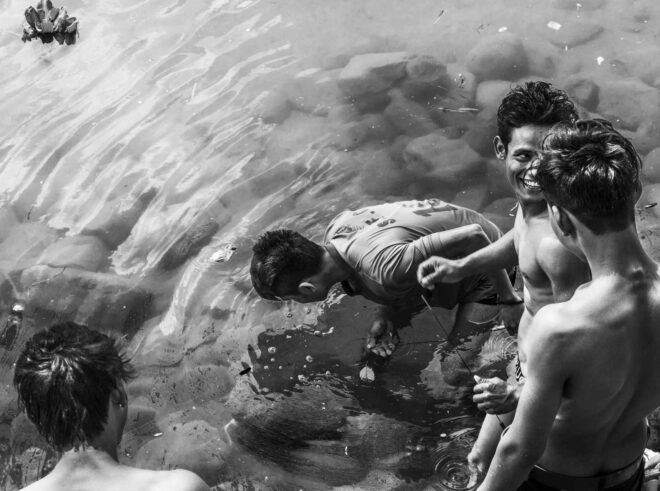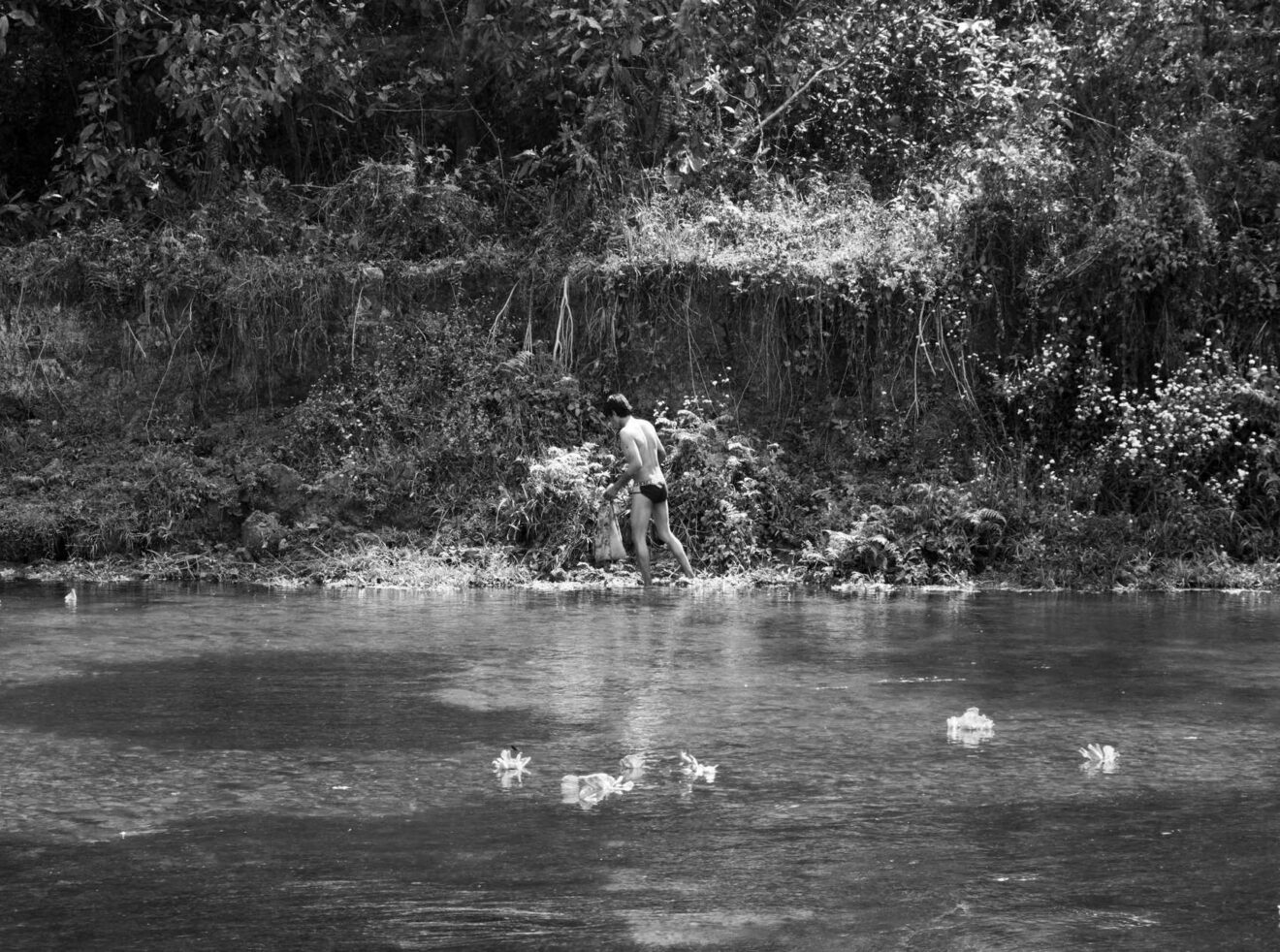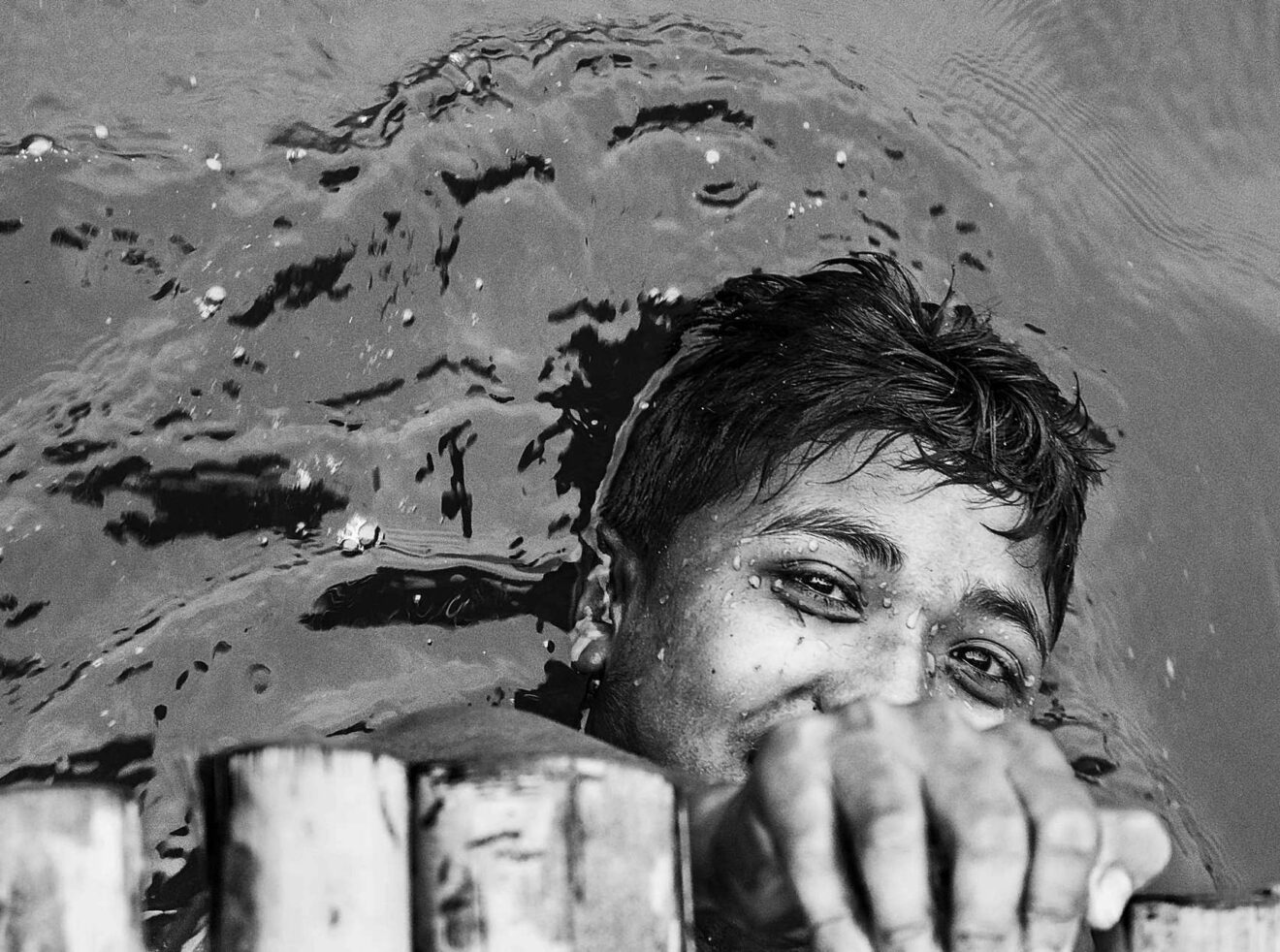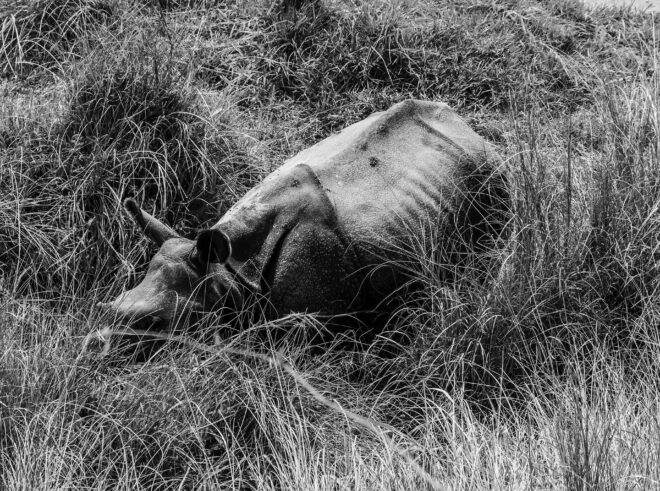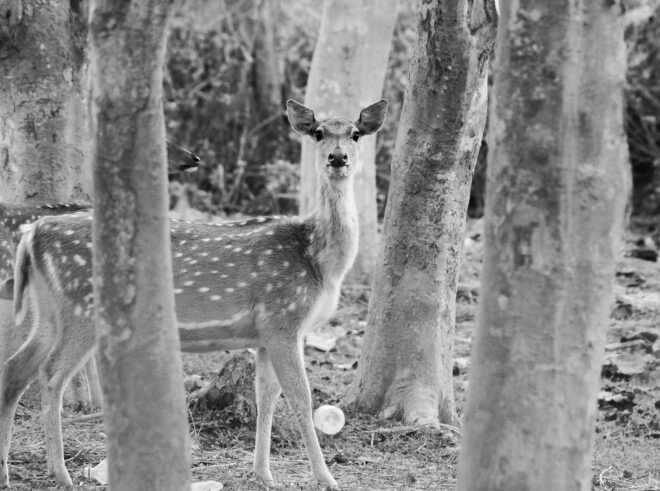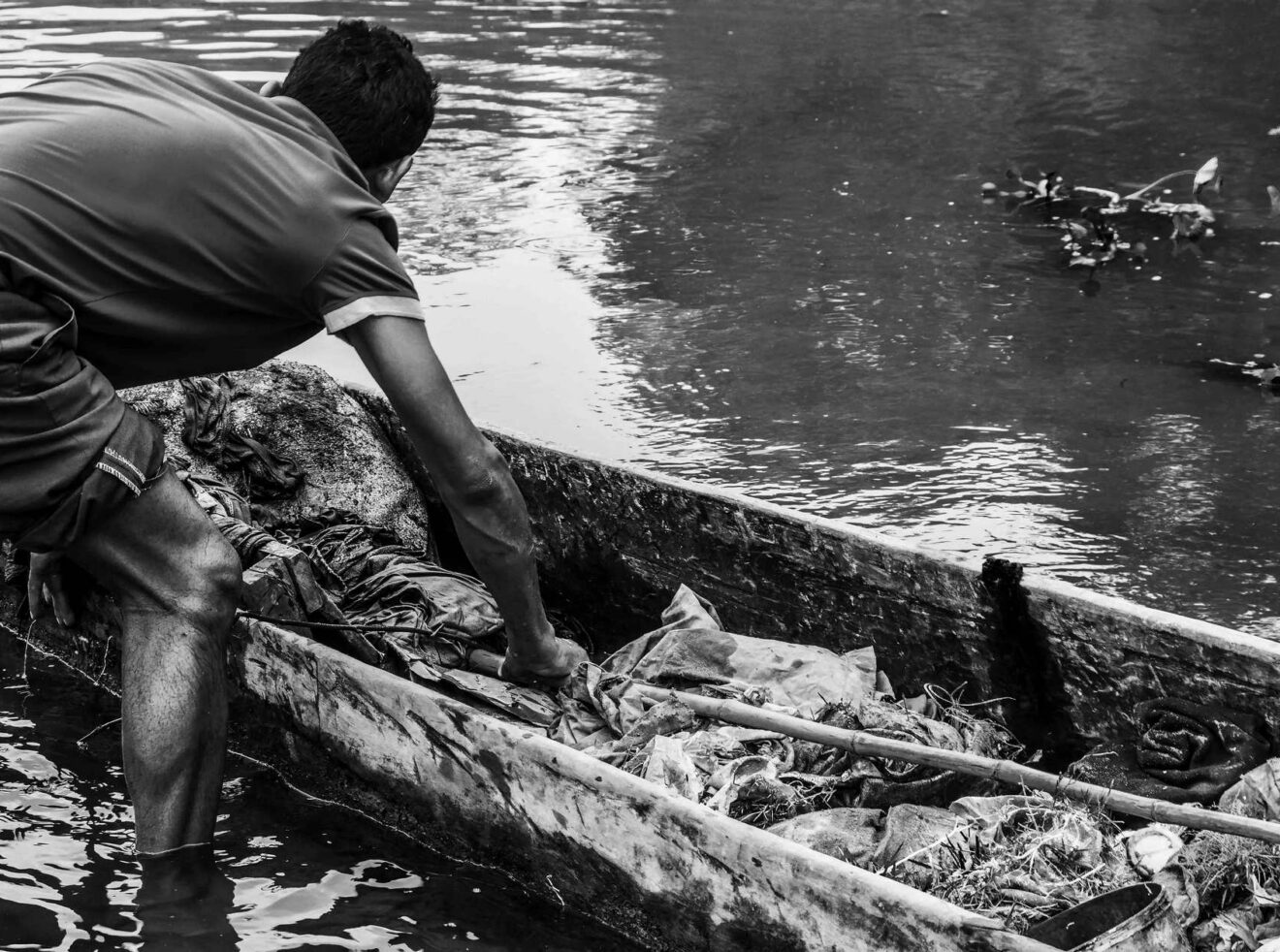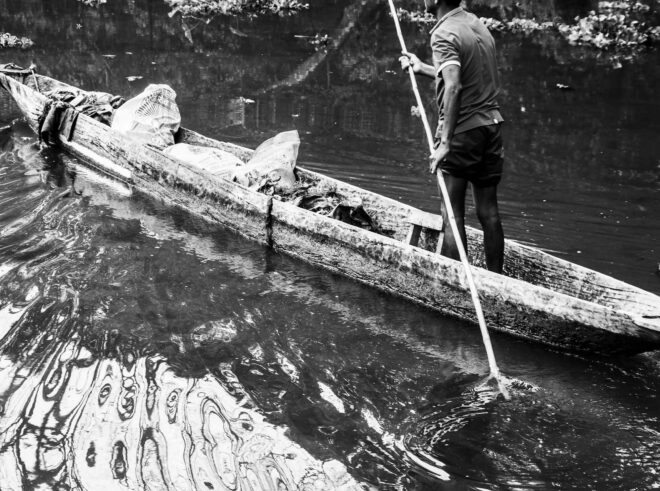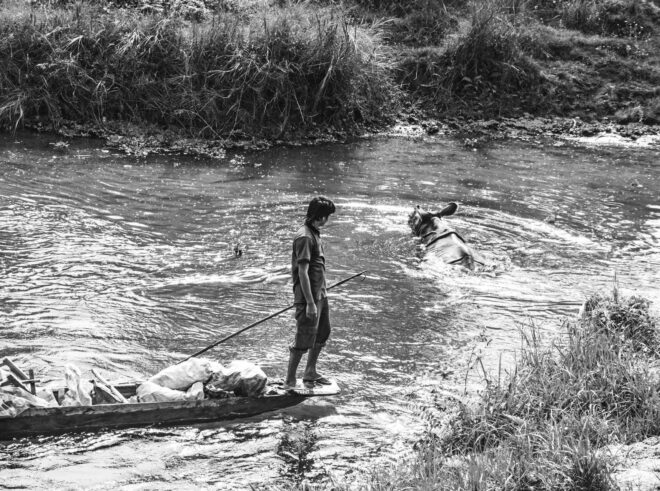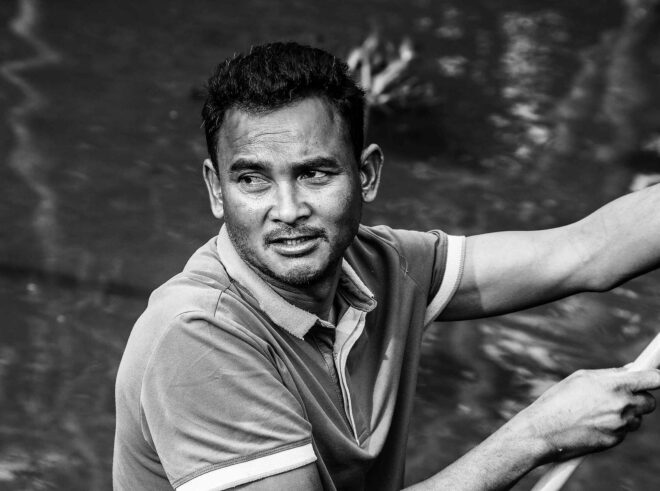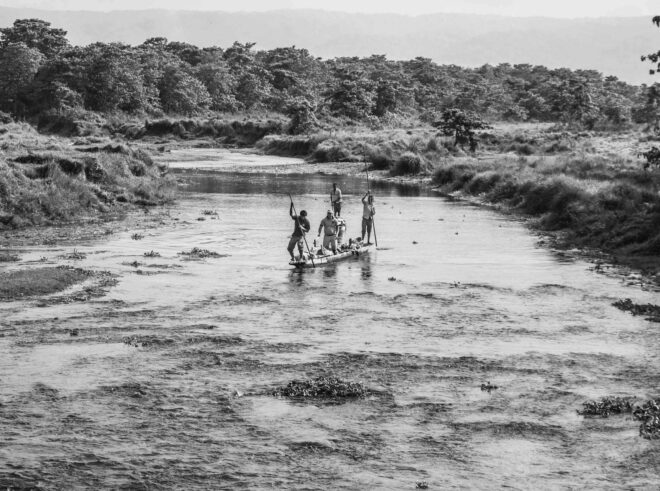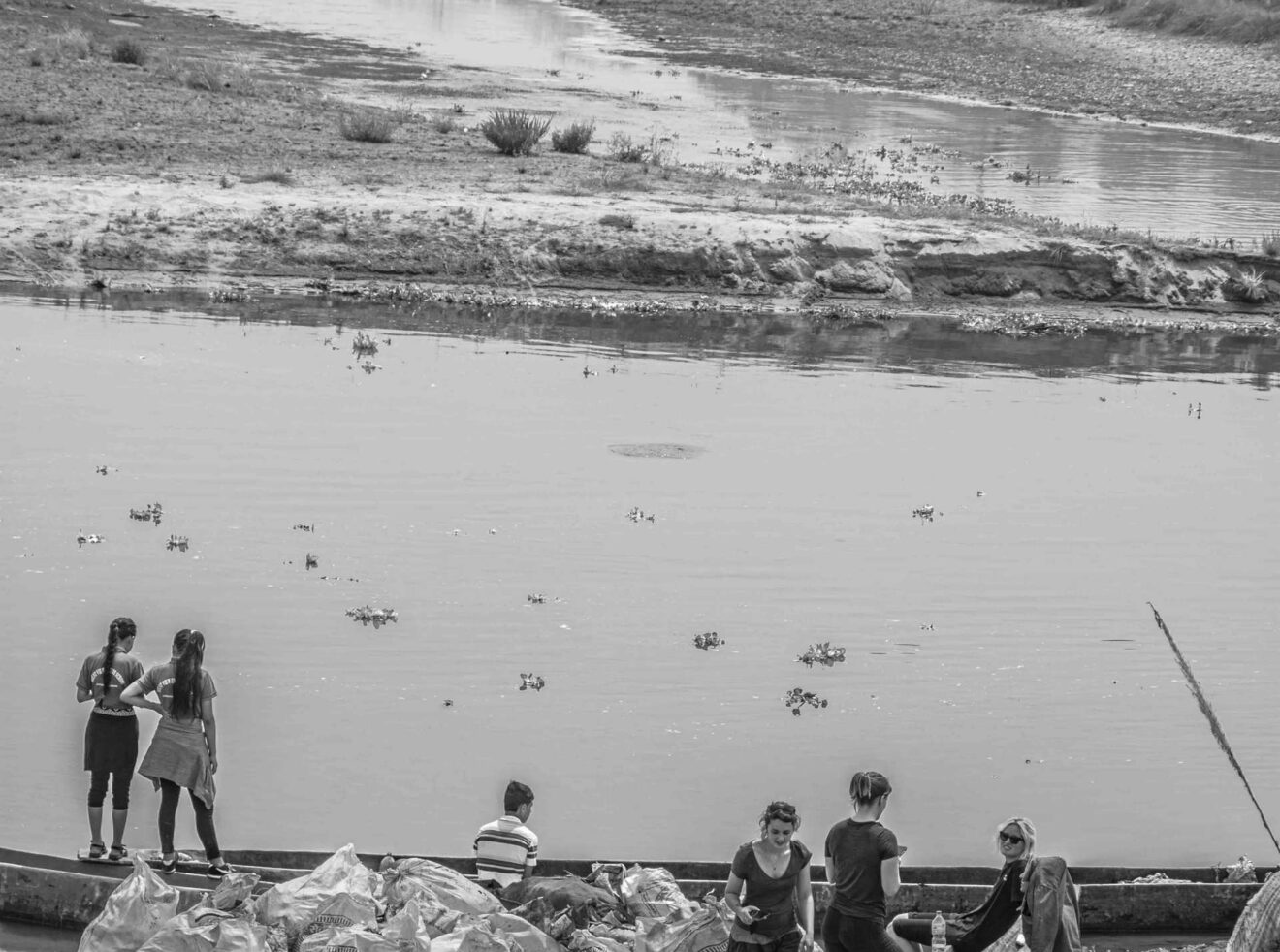Committente: autofinanziato Data: aprile 2018 Luogo: Sauraha, Chitwan Park, Nepal
Durante il mio peregrinare in Asia, dopo l’India mi recai in Nepal, e ai primi di febbraio del 2018 ero nella pianura del Terai a 20 km dal confine indiano, a Lumbini, che significa l’incantevole ed è una delle quattro città sacre nepalesi. Prati verdeggianti e uccelli acquatici, vita calma e di una semplicità e povertà disarmante. In seguito, decisi di dirigermi a sud e precisamente nel Chitwan National Park, il parco naturale più antico e grande del Nepal.
Invece dei più frequenti paesaggi montani nepalesi, qui, a 400 metri di altezza, mi ritrovai in una lussureggiante foresta tropicale, attraversata da corsi d’acqua come il Narayani River che scorre lento. Purtroppo i rifiuti, anche in Asia, non sono solo nelle grandi aree urbanizzate ma anche dove meno te li aspetteresti, e così li troviamo anche in questo straordinario parco naturalistico.
Nell’attuale “età della plastica” si trovano dunque rifiuti persino nello scorrere placido di un fiume, ma mi ha sorpreso piacevolmente che anche qui volontari intraprendenti, con i pochi mezzi a loro disposizione, s’impegnano a tener pulito l’ambiente. Così sono stato invitato da un simpatico organizzatore nepalese e il 22 marzo 2018, al mattino presto in una leggera foschia, mi ritrovo con loro per aiutare e insieme documentare l’attività di adulti e bambini che, immergendosi direttamente nell’acqua del fiume, oppure tramite barche e canoe, vogliono ripulire la giungla di Sauraha. Le canoe, costruite in legno ricoperto da catrame o pellicola di gomma, sono imbarcazioni eccellenti e servono allo scopo; per raccogliere i rifiuti si usano semplicemente guanti di lattice e sacchi di juta sintetica.
I bambini, com’è giusto, alternano l’aiuto a momenti di gioco nuotando o pescando nel fiume; però, non in tutte le zone è possibile immergersi per la presenza di gaviali e alligatori; si possono incontrare anche rinocereonti immersi nell’acqua, che non sono così pericolosi. Inaspettatamente, oltre a tigri, leopardi, orsi neri, rinoceronti, alligatori, gaviali – e molti altri animali – vediamo anche cervi nella giungla. Purtroppo, anche qui, appena ci si inoltra nella foresta, le bottiglie di plastica non mancano.
Anche i Mahout, con i loro pazienti elefanti, aiutano a ripulire.
Oltre alle canoe, anche un trattore carico di rifiuti sta per arrivare a destinazione. Dopo otto ore trascorse nella giungla, raccogliendo la spazzatura, siamo riusciti a trasportarla ai confini della città di Sauraha; ora sarà portata in posti adatti ad uno smaltimento corretto.
Commitee: self-financed Date: April 2018 Location: Sauraha, Chitwan Park, Nepal
During my wanderings in Asia, after India I went to Nepal, and in early February 2018 I was in the Terai plain 20 km from the Indian border, in Lumbini, which means the enchanting and is one of the four sacred cities Nepalese. Green meadows and water birds, a calm life and a disarming simplicity and poverty. Later, I decided to head south and specifically to Chitwan National Park, the oldest and largest natural park in Nepal. Instead of the more frequent Nepalese mountain landscapes, here, at an altitude of 400 meters, I found myself in a lush tropical forest, crossed by streams such as the slow-flowing Narayani River. Unfortunately, waste, even in Asia, is not only in large urbanized areas but also where you would least expect it, and so we also find it in this extraordinary natural park. In the current “age of plastic”, therefore, there is waste even in the placid flow of a river, but I was pleasantly surprised that even here enterprising volunteers, with the few means at their disposal, are committed to keeping the environment clean. So I was invited by a nice Nepalese organizer and on March 22, 2018, early in the morning in a light haze, I find myself with them to help and together document the activity of adults and children who, diving directly into the water of the river, or through boats and canoes, they want to clear the jungle of Sauraha. Canoes, built of wood covered with tar or rubber film, are excellent boats and serve their purpose; to collect the waste, simply use latex gloves and synthetic jute bags. The children, as is right, alternate help with moments of play by swimming or fishing in the river; however, it is not possible to dive in all areas due to the presence of gharials and alligators; you can also meet rhinos immersed in the water, which are not so dangerous. Unexpectedly, in addition to tigers, leopards, black bears, rhinos, alligators, gharials – and many other animals – we also see deer in the jungle. Unfortunately, even here, as soon as you enter the forest, there is no shortage of plastic bottles. The Mahouts, with their elephant patients, also help clean up. In addition to the canoes, a tractor loaded with waste is also on its way to its destination. After eight hours spent in the jungle, collecting the garbage, we were able to transport it to the borders of the city of Sauraha; it will now be taken to places suitable for proper disposal.
